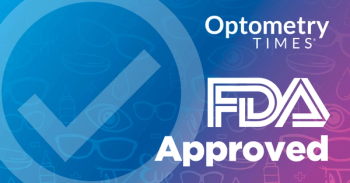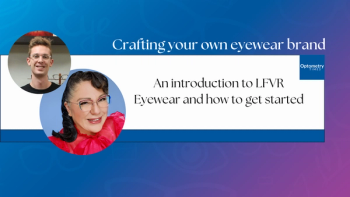At ARVO 2025, Julie Poteet, OD, CNS, MS, FOWNS, presented compelling new data on a novel nano-emulsion, lipid-containing artificial tear (Blink Triple Care, Bausch + Lomb). The study is a continuation of research first published by Eric Donnefeld et al. in BMC Ophthalmology (October 2024) and brings new insights into patient-reported outcomes and safety assessments.
The study targets a prevalent yet under-addressed component of dry eye disease: lipid layer dysfunction, implicated in approximately 86% of dry eye cases, especially those associated with screen use and environmental exposure. Poteet emphasized the increasing prevalence of dry eye symptoms in younger populations, from high school students to working adults.
Study design & methodology
Key takeaways for optometrists
- Evaporative dry eye affects 86% of dry eye sufferers; address the lipid layer early.
- Blink Triple Care, a nano-emulsion lipid-containing eye drop, showed:
- Non-inferiority in comfort
- Superior patient-reported vision quality
- Low incidence of blurriness
- Dry eye is progressive and chronic. Early intervention improves outcomes.
- Ideal for screen users and younger demographics now presenting with dry eye symptoms.
This prospective, multi-centered, double-masked trial compared a novel lipid-containing nano-emulsion drop (Blink Triple Care) to a nearly identical formulation without the lipid component. Participants included habitual users of artificial tears who self-reported symptoms of ocular surface disease.
Assessments were conducted at baseline, day 7, and day 30, focusing on:
- Ocular comfort (via visual analog scale)
- Vision-related quality of life
- Subjective ocular symptoms
- Corneal staining
Notably, non-inferiority in ocular comfort was confirmed, validating the safety and tolerability of the lipid-containing drop. However, the lipid formulation offered added benefits in other areas.
Key findings
One of the more surprising findings was that the lipid-containing eye drop demonstrated statistically significant improvements in vision-related quality of life—especially in minimizing blurriness, which has historically been a downside of lipid-based drops.
“This nano-emulsion drop was less likely to blur vision, and patients in the treatment group reported better visual quality by day 7 and day 30 compared to the non-lipid group,” said Poteet.
These findings reinforce the drop’s broad applicability for screen users and others experiencing evaporative dry eye due to Meibomian gland dysfunction or reduced blink rates.
Clinical implications for optometrists
Poteet was clear in her message to colleagues: treat early and treat proactively. Tear film instability not only impacts comfort but is a major contributor to glasses remakes and vision quality complaints.
This new formulation presents a non-blurring lipid-based option, making it an ideal first-line defense for evaporative dry eye—particularly in younger, screen-focused patients.
Conclusion
“Not all artificial tears are the same,” Poteet reminded practitioners. “We finally have a lipid-based option that supports the tear film without sacrificing visual clarity.”



















































.png)


